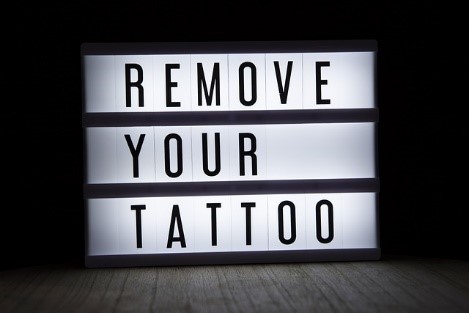Know the Various Tattoo Removal Techniques

The common tattoo removal techniques can be bifurcated into two categories; verified and non-verified. Verified tattoo removal techniques involve laser tattoo removal and other non-laser tattoo removal techniques. Homemade DIY remedies can also be used, but they are non-verified and have several risks and aftereffects.
Sometimes, people casually go for tattoo removal without consulting a dermatologist causing many repercussions. Before you go for tattoo removal, it is always better to consult a dermatologist. A dermatologist can recommend the right process for your skin and sometimes even suggest the best tattoo removal school.
Let us discuss a few common techniques of tattoo removal.
A. Laser removal method
A tattoo on the skin is an amalgamation of bigger foreign particles which the human immune system cannot remove. The laser method is imparted on our skin so that the bigger foreign particles can be broken up into small pieces and then cleared by our immune system.
Laser technique for tattoo removal is considered safe, but sometimes it may result in the appearance of bruises, blisters, and scabs.
There are four basic types of laser tattoo removal techniques.
- QSL (Quality Switched Lasers) The method of Quality Switched Lasers is based on the principle of Selective Photo thermolysis. This method involves the heating of the ink placed on the skin but not more than its TRT (thermal relaxation time).
By applying heat on the skin, the pigmented cells are destroyed. This results in the fading of the tattoo ink and thereby the removal of the visible tattoo.
- Picosecond laser technique
Another laser technique used for tattoo removal is the Picosecond laser technique. According to studies, the picosecond laser method for tattoo removal is better than the quality switched laser method. This is because of the better penetrating power of the lasers used in the latter.
- R20 or Multi-pass treatments
Many tattoo removal schools claim that traditional methods involving single-pass laser treatment are inferior in comparison to the R20 procedure. The process involves laser treatment of the tattoo multiple times with an interval of twenty minutes between the treatment.
- Intense pulsed light therapy
This method has the same procedure of breaking down the ink pigments on the skin. However, it is not much in use because it may not be suitable for people with dark skin tones.
Laser treatment will not completely erase the tattoo, even after repeated sessions, although it may lighten the ink mark. After going through laser treatment, there is a possibility of blisters or swelling and bleeding.
B. Non-laser tattoo- removal
- Tattoo removal by surgery
Studies have shown that surgical removal of a tattoo is 90% effective only in the case of tattoos that are smaller in size. In this case, before the process, the tattooed region is numbed using an anesthetic. After that, the tattoo is removed by a scalpel and the edges of the skin are stitched again.
Applying an anti-bacterial ointment helps in healing stitches. However, the stitch may leave a scar on the skin after the tattoo is removed.
- Dermabrasion
Again, in this method, the tattooed area is numbed before the removal begins. A rotary device having a brush or an abrasive wheel is used to go into the deeper levels of the dermis. The device sands away the upper layer and reveals unblemished skin underneath.
The skin may remain sore for many days after the tattoo removal, and it takes more than two weeks to recover. Also, this method is less effective as compared to the laser technique.
- Chemical peel
This method involves the use of glycolic acid peel, acid injections, and TCA chemicals for the removal of the tattoo embedded on the skin.
This method burns the tattooed area and may leave a scar.
- salabrasion
The tattoo removal technique involves applying salt as a scrub. It is a traditional method that removes the scar mark. However, it is a painful procedure that leaves a scar. It may also cause pigmentation and infection.
Apart from all the above-mentioned tattoo removal techniques, other traditional DIY processes are still in use. However, they are not approved by any tattoo removal school.
They involve the use of several natural ingredients such as aloe vera gel, vitamin E oil, and others. However, these home remedies are not always beneficial.


Leave a Reply